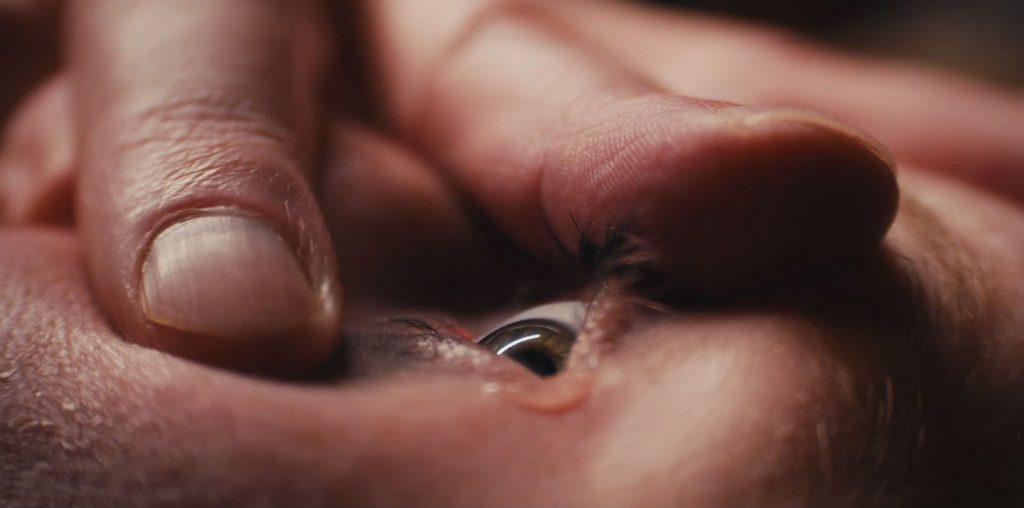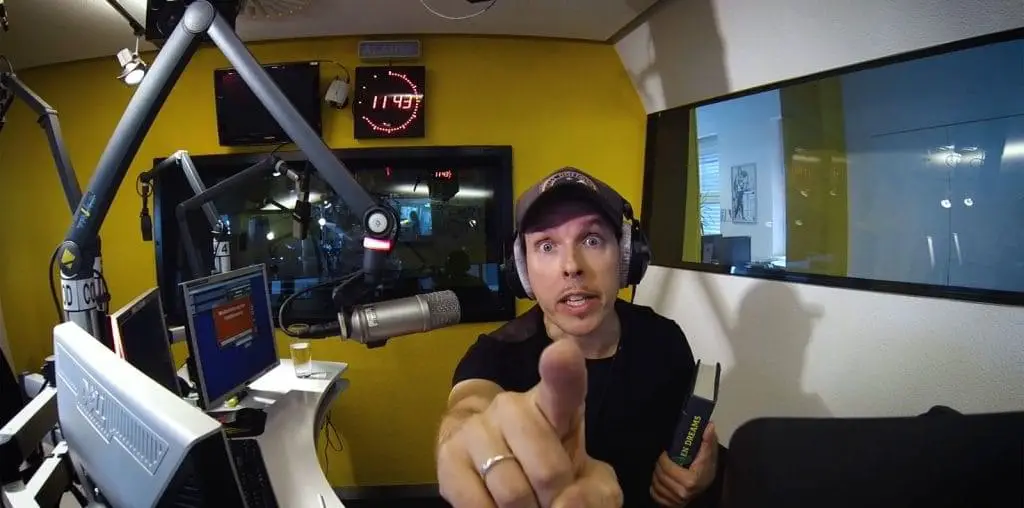
Was the focus initially on an idea? Was it about form or content? Was it formally about, for example, constructing a film primarily from macro shots, details, objects and documents?
I wanted to combine the conventionality of horror film (based on a new reading of H. P. Lovecraft) with a radical experimental aesthetic. Masking Threshold is largely shot with macro and loupe lenses. Things that are only a few inches tall, for example, become full screen.
This makes it possible to enlarge the narrow space of the nameless protagonist’s hobby room almost to infinity of miniaturization. Everyday things like greasy pizza, broken pencils, ants, or egg yolks suddenly become monstrous and otherworldly. It’s almost as if my actor Ethan Haslam’s voice and the objects on his desk merge into an alien, psychoacoustic landscape through which the viewers were narratively moved.

What narrative traditions are you following?
Although I leave the supernatural dimension open, and it is not clear until the end whether my protagonist imagines it all, Masking Threshold is clearly in the tradition of Cosmicism, a literary philosophy founded by H. P. Lovecraft, used to describe his weird fiction. The human characters are exposed to the supernatural almost without protection and often fall into madness when they finally can no longer close their eyes to the truth.
With the help of my co-author Samantha Lienhard, this is where I wanted to start. There have been a few excellent attempts to bring Cosmicism to the screen, but most of the time it seems cheap. The wonderful thing about weird fiction is that we can’t really imagine the horror, that the transdimensional evil just isn’t the tentacle monster that looks ridiculous as an FX puppet or as a rendered CGI representation. I’ve never wanted to show what my protagonist is actually talking about and what the danger looks like. But I did want to show what it drives him to do.
In Traceroute, you visit H. P. Lovecraft’s grave and also talk about your dissociation as a former fan and an emancipation story that is significant for you. Does that play a role here?
Yes, that all plays into it. Traceroute was my homage to nerddom, to the positive elements, to what is worth preserving, to what is progressive and underground about this culture. In Masking Threshold, I wanted to devote myself to the darker side. H. P. Lovecraft exemplifies this fascination like no other, and the fandom for him is well-justified. It just goes to show how many people he influenced, from Jorge Luis Borges to Stephen King. However, Lovecraft cannot be read at all without criticism. Criticism of him, criticism of the racist WASP culture of New England, criticism of bourgeois literature and its tendency to exclude new voices. Lovecraft was a perpetrator and a victim. These are also essential elements of my film.
Masking Threshold is a film about a suffering but stubborn and willful person whose perspective of the world and whose beliefs are turned upside down, whose dogmas are turned against the world and against himself. My protagonist is queer, so you want to understand the societal pressures on him, you want to understand the trauma he’s been through and the burden of his terrible illness. But there comes a point when sympathy for him turns to horror.
My protagonist is suffering and the world is turning its back on him. He is alone and misunderstood. Many of his thoughts and processes are drawn from my understanding of the world. They are based on my own dark thoughts. Odd though it may sound, ethics is a fundamental theme in Masking Threshold.





